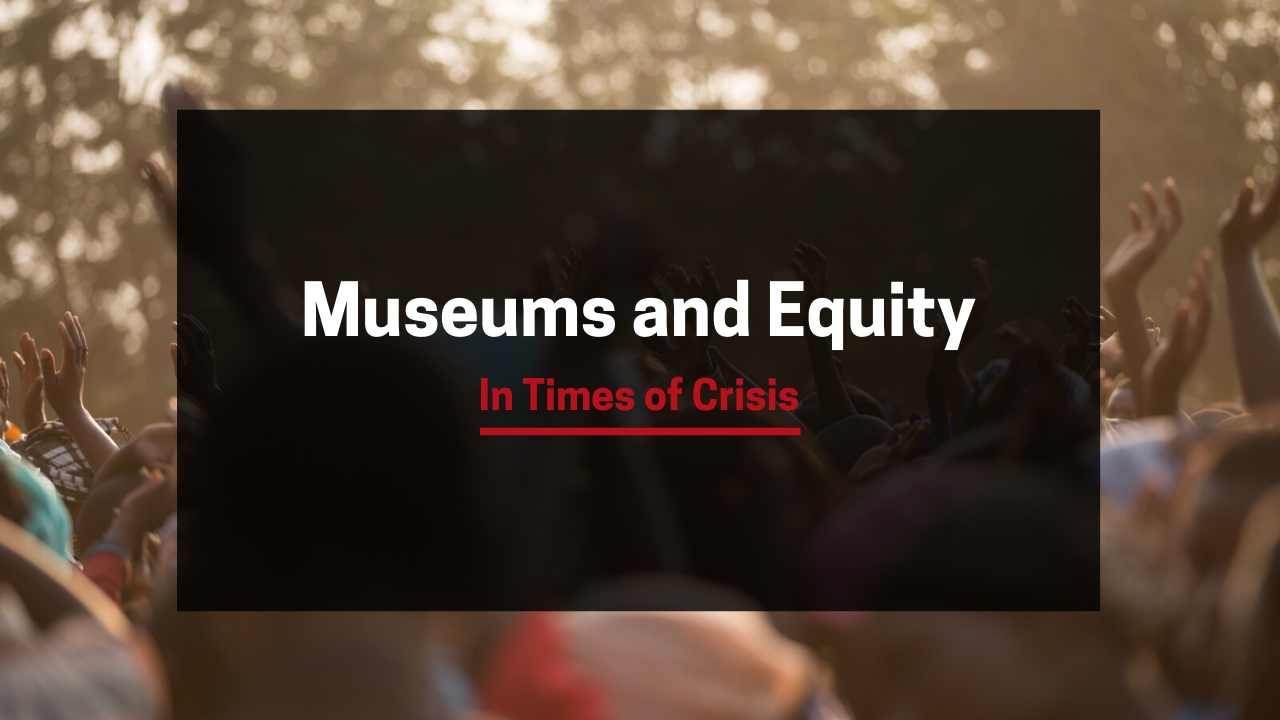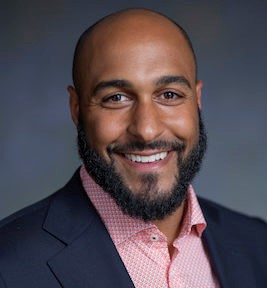
In the midst of a pandemic that has brought an incredible amount of pain and suffering to so many of us, I know there’s a lot on your plate as a leader, and you are being pulled in multiple directions. However, it is critical that you realize we are witnessing, in real time, the tale of two Americas.
While every one of us is trying to stay safe and healthy, we’ve seen the disproportionate toll that COVID-19 has taken on communities of color, and specifically on the Black community. This has been coupled with a string of recent racist acts of violence, including murder, against Black people in the United States at the hands of white people and police. Ahmaud Arbery was hunted down, shot, and killed in Georgia; Breonna Taylor was shot in her bed in Kentucky; Christian Cooper was harassed in Central Park; and George Floyd was violently murdered by the force of a policeman while screaming that he could not breathe. In just the last few days, two names have been added to this list: Tony McDade and David McAtee. And these are only the incidents of harassment and death that have made the news. We know there are countless other incidents against people of color in this country daily that go unpublicized.
As we bear witness to protests across the country in the name of justice, equity, and our shared humanity, every person and organization must decide how to respond. Those of us with experience in the DEAI space often find ourselves working with leaders and organizations that describe themselves as committed to equity and inclusion, but regularly remain silent on timely issues that really matter. This inaction speaks volumes to how much further we have to go. It is time to truly recommit to DEAI and do better. Here are some steps you can take, as a museum leader, to do so.
Check in with your staff members of color
Just as you might check in with a colleague after a family member passed, check in with people of color in your museum about how they’re doing. For many of us, the murder of any unarmed person of color can feel like it was our own, because we know that it could have just as easily been us, a brother, a father, a mother, a sister, or a friend. Consider this statistic: Black men have a 1 in 1,000 chance of being killed by police. That is shattering. For the Black community, every time an unarmed Black person is killed, it adds to a collective trauma that feels like watching yourself murdered repetitively on national television. You may not understand this phenomenon, but you need to accept it as valid and true.
I’ve heard from numerous people of color who work in museums and nonprofits with a stated commitment to centering equity and unlearning white supremacy culture, yet hear nothing from leadership, or even colleagues, when these tragedies occur. This is distressing. DEAI work cannot be sustained without supportive, authentic work relationships.
Acting like nothing is happening is putting your comfort over our humanity. Here are a few ways you can check in with your staff:
- Accept that, while these conversations may be uncomfortable for you, you need to become comfortable with being uncomfortable.
- Check in with your staff members of color personally. Send them a note, call, or text. Let them know that you are there to support them for when they want and need support. They are grieving and processing; make sure you allow space for them to express and receive what they need as an individual.
- Let staff members know what work-sanctioned resources are available. Do you offer counseling services, or do your health benefits include coverage for counseling? Remind staff members that needing personal or mental health time is critical self-care practice and a valid reason to take a day off.
- Create space for staff of color to process without white people present. Affinity space is important at this moment.
Ask your staff members of color what they need
Beyond just checking in about how people feel, you should start a conversation about what they need. This can vary from person to person: your employees are not impacted by events in the same way. Black people are dying from the pandemic at a higher rate because of pre-existing conditions, lack of health insurance, a lack of access to proper care, and because social distancing is a privilege that people experiencing homelessness cannot afford. Now, in this devastating time, this reality is compounded with the fact that Black people are also dying because white police are harassing and killing them while jogging, bird watching, or enjoying other basic public rights.
A few days ago, I was on seven Zoom meetings, four of which included white folks and three which were attended only by people of color. The former meetings did not even mention current events, while each of the latter included check-ins to ask how we were all doing, share our thoughts and emotions, and show support for each other as best we could. The stark contrast between these meetings really shook me. I implore you: take the time to check in with your staff members of color. We are filled with pain, rage, sadness, and many combinations of these and other emotions. Checking in to learn about what we’re experiencing and what we need is not a big ask.
Consider making an internal statement
Like other organizations, museums often make public statements when they are being impacted by timely events, such as the current pandemic. The recent tragic murders of Ahmaud Arbery, Breonna Taylor, Tony McDade, David McAtee, and George Floyd may be a perfect example of when a museum might consider a public statement about their commitment to equity. I understand, however, that may not be your case. As a museum leader, I know you have multiple responsibilities, multiple constituencies, and multiple points of view that you need to take into account when making decisions about public statements.
In the meantime, a good start is to make an internal statement. This statement does not have to be long, but it does need to acknowledge and address what is happening around the murder of Black people, and it needs to reaffirm your specific commitment to doing the much-needed equity work within your own museum.
Do not consider making a public statement without making an internal one first. In our experience, organizations have often released public statements about current events without addressing the issues internally with staff, leading to many staff members of color feeling oppressed within their own organizations. Your museum’s public commitment to DEAI must align with its internal one.
These are the times in which you and your museum’s commitments to DEAI will be put to test. As a museum leader, you will need to make the decisions that authentically showcase this commitment, express empathy, and honor your staff members of color’s experiences.
I would like to thank my colleague Natanya Khashan for her contributions to this article.









The shameless speak their words of fear,
That the speechless are ashamed to hear.
Most of us whisper to different races that we are equal, but few of us shout that we are not. This is why your article, Mr. Plumley and Ms. Khashan, is an important message for those of us who do not live with this hate directed at them, to shout words of equality louder than those who oppose it. Show the people who feel threatened that we may not be going through the same thing, but we support you, and always will, as equally important people of this nation.
Our cultures are different, and our skin ranges in color. But are hearts love, and our minds dream. These are the things that matter. This is what makes us people.
When the shameless speak their words of fear,
We, Humanity, shall answer, “Together, Void of Hate, As One”.
Joe, this is beautifully written. It is a great message for all to remember. We all deserve equality. And it is times like this that we need to come together and support those who are in need of it most.
This is a beautifully written and wise article Mr. Plumley and Ms. Khashan. It is an action template for going forward but also importantly makes space right now for compassionate, shared grief.
Excellent article!
Please consider an update to include a message to the museum board members.
If it “starts at the top” they need to lead by example and set the tone for the culture.
Point on guidance. Thank you.
This is also an opportunity for administrative leadership to adopt and announce a strong proactive position on staff diversity. We issued a formal position when establishing our museum in the heart of Mississippi. It raised some concerns on the part of some stakeholders and board members who would tell us “Well, I hire based on qualifications not race.” Our position was to proactively “seek out” candidates of color with those qualifications.
In 2019 we participated in a demographic survey of art museum staff, conducted by Andrew W. Mellon Foundation and the American Alliance of Museums (AAM). The outcome of the report revealed that our institution’s demographic data contextualized by aggregated data from the field put us ahead of most institutions in the nation regarding diversity – especially in professional leadership. Our Board’s Committee on Directors is aggressively working to build not only a diverse board but one that reflects statewide representation.
An important point I continue to emphasize is that building diversity must be a purposeful mission. It takes dedication and hard work. Frequently you need to recruit. In Mississippi, it was difficult because many of candidates do not apply.
Our Boston studio is located within one of Boston’s many neighborhoods of color and we honor our neighborhood and the other neighborhoods of color which provide such a richnes of culture and of life to our whole city.
I very much appreciate the article. And let us also remember of volunteers of color.
Andrew and Natanya,
Thank you for this article. The disease of white supremacy culture can only be cured with vulnerable, honest conversations, and a sustained commitment to to the internal work. The work for myself and other BIPOC colleagues, is unlearning the MYTH that we are not valuable. Conversely, the myth my white colleagues must unlearn, is that they are more valuable. The constant learning and unlearning of this destructive myth is the at the core of our work.